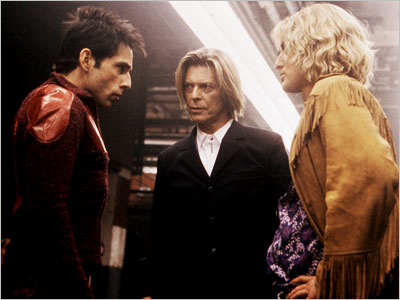 After our discussion on Ms. America and Vanessa Williams and the "Means to the End" these big moments for typically disempowered or discriminated minorities in our society, America's Next Top Model came to mind. The premise is similar to that of a beauty pageant except the girls cattily compete to become America's Next Top Model on the cover of Seventeen magazine! There is A LOT to be said about representation and the presentation of class, race, and Tyra Bank's herself but I'm going to focus on three seasons ago when Whitney Sinclair, a plus-sized model, was deemed America's Next Top Model.
After our discussion on Ms. America and Vanessa Williams and the "Means to the End" these big moments for typically disempowered or discriminated minorities in our society, America's Next Top Model came to mind. The premise is similar to that of a beauty pageant except the girls cattily compete to become America's Next Top Model on the cover of Seventeen magazine! There is A LOT to be said about representation and the presentation of class, race, and Tyra Bank's herself but I'm going to focus on three seasons ago when Whitney Sinclair, a plus-sized model, was deemed America's Next Top Model.The Banet-Weiser article discusses the significance and the reality of Vanessa Williams, an African American, winning Mis America "this precence is understood as noncoincidental and purposeful" (127). The crowning of an America's Next Top Model who was a plus-sized model in the 10th Cycle who competed against an almost entire cast of "regular," "normal" models was a very parallel occurence. By having a winner be plus-sized, it was not only a "purely 'political' matter" (127) but it also pointed out how this was not typical beauty for AMERICA's Next Top Model but of how things were progressing.
As we discussed in lecture, beauty pageants are explicit negotiations of body and use and these women in both ANTM and Ms. America are representing the nation. ANTM is shown in 170 countries internationally and many countries have their own Next Top Model competition as well. As we are perpetuating this image of what a country's TOP model should be like, we are continuing to disempower and constrain women. Spelman highlights how Plato discusses that Beauty always goes beyond the body. Yet this show is entirely focused around the women's body and the way that it can be used to find success and for women to represent their nation proudly.
Men are never contestants as they can't be America's Next Top Model. As well, the few men on the show are almost always homosexual and extremely effeminite. The show is embracing and celebrating the female body but as Spelman says "(Plato) points an accusing finger at a class of people with a certain kind of body - women -because he regards them, the class, as embodying (!) the very traits he wishes no one to have."
So we have this idealized image of a woman. America's Next Top Model is finally not a zero! A ridiculously beautiful plus-sized girl wins who is a size 10..we have progress! African Americans can become Ms. America too! These are good in theory and in all honesty, they're pretty good things in general. I mean, progress is still progress, right? My question for you guys is where you think we should go with these performances? Do we need radical change, a complete reversal of women's representation? How can we demonstrate to the mainstream audience the falsities that exist in the representations of women? Are these pseudo-victories useless in the long-run and just reaffirming past notions or do they hold value?








